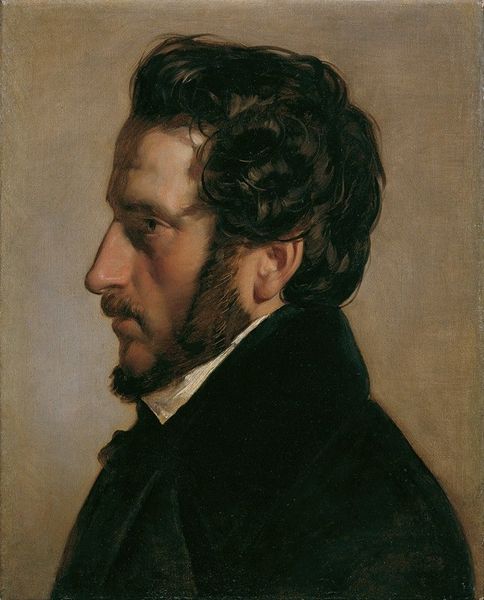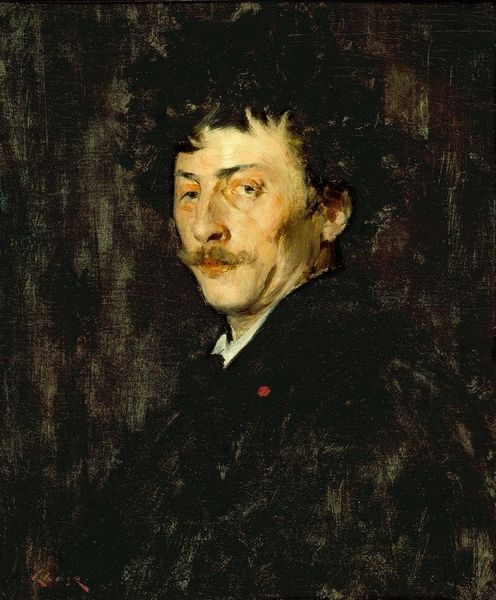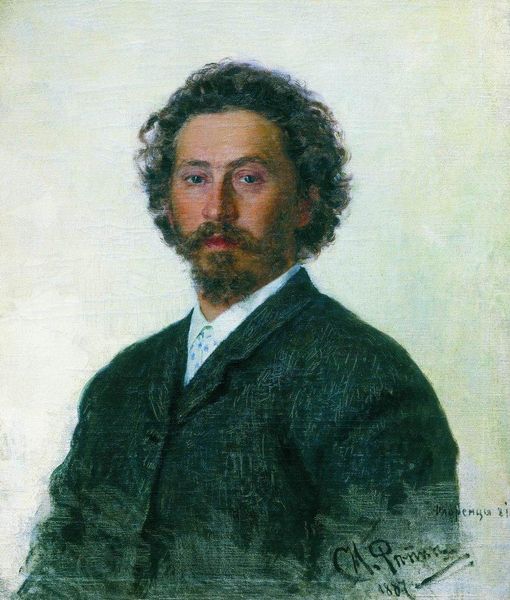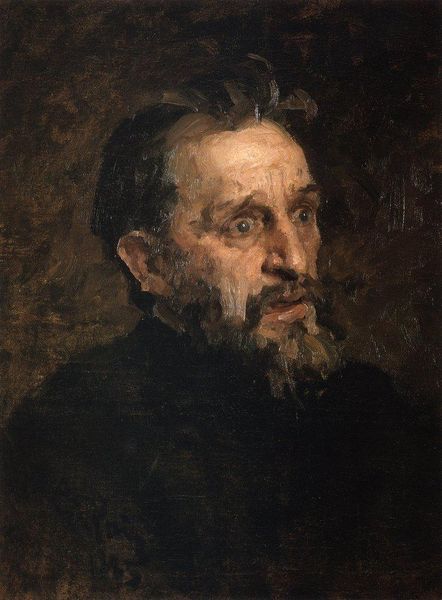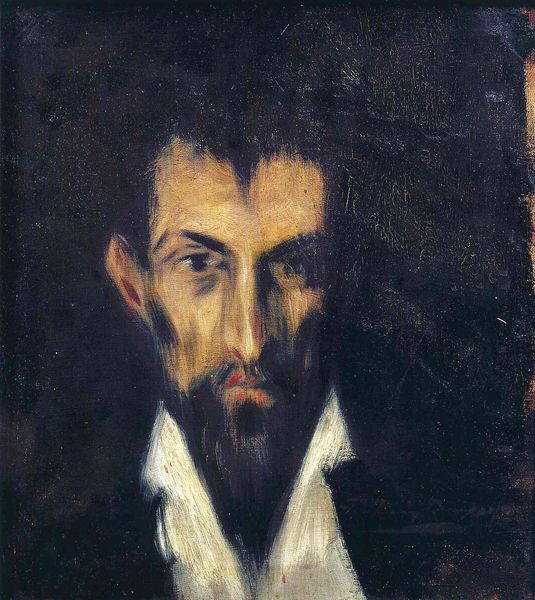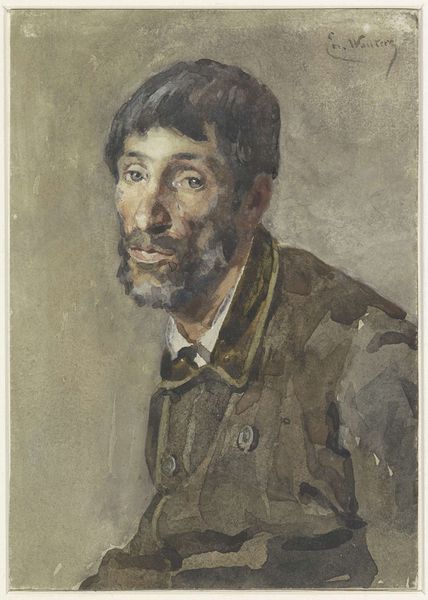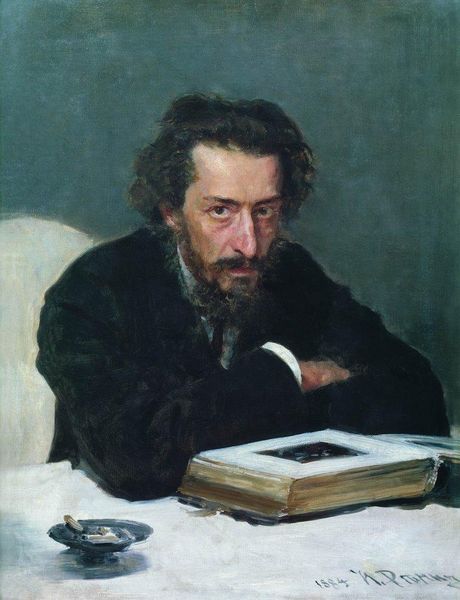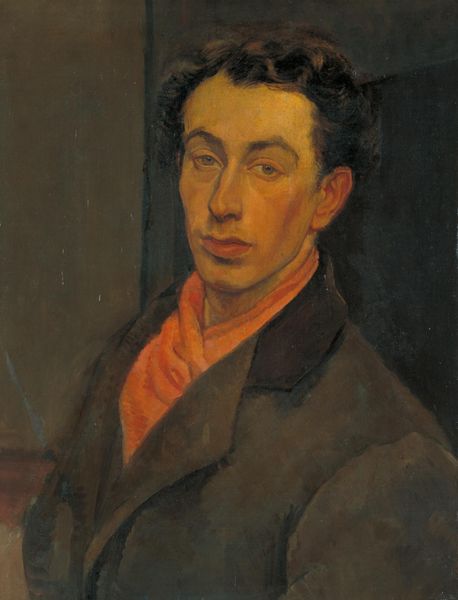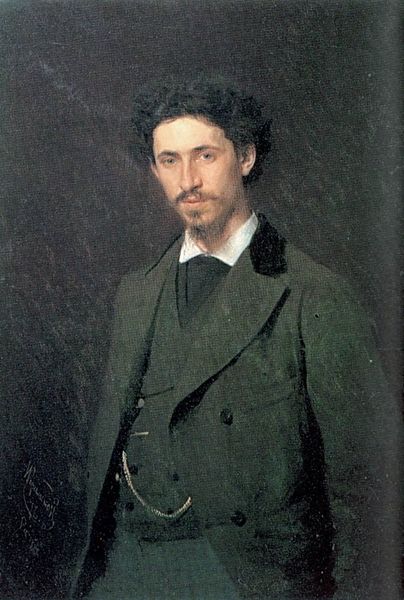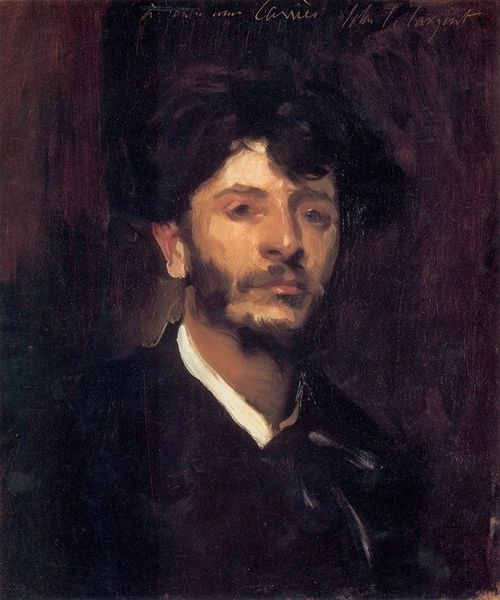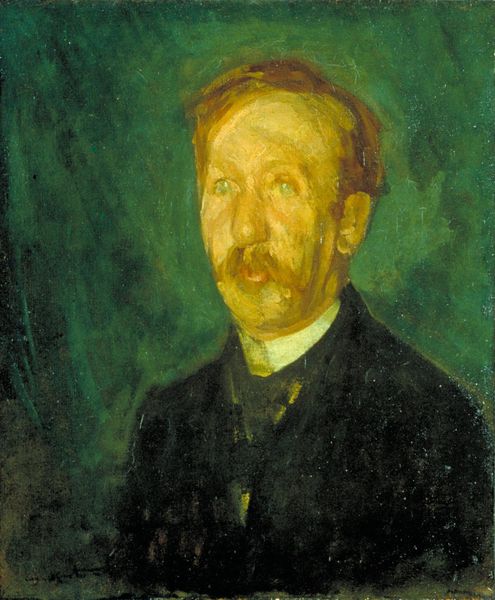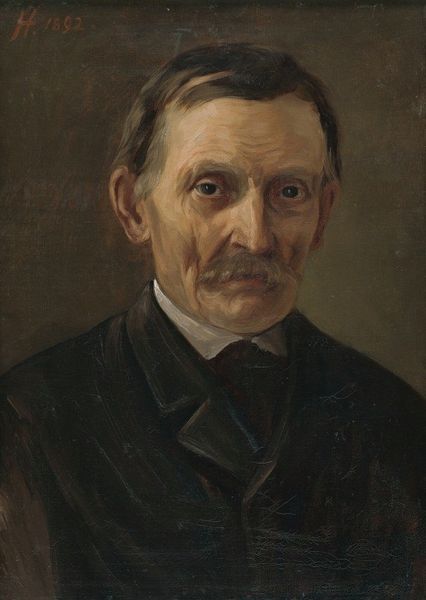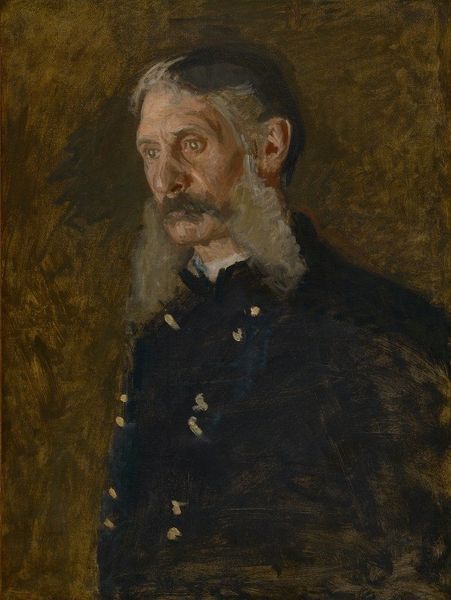
painting, oil-paint
#
portrait
#
figurative
#
portrait
#
painting
#
oil-paint
#
portrait reference
#
portrait head and shoulder
#
romanticism
#
animal drawing portrait
#
portrait drawing
#
facial portrait
#
portrait art
#
fine art portrait
#
realism
#
celebrity portrait
#
digital portrait
Copyright: Public Domain: Artvee
Curator: Gericault’s "Portrait of a Kleptomaniac," painted in 1822, offers a compelling glimpse into the artist's engagement with societal outcasts. Editor: There's such stark sadness etched onto his face; the artist really captures the weariness. You can practically feel his suffering through the rendering of his gaunt cheeks and hollow eyes. Curator: Gericault made five portraits of the insane. Painted in oil, this painting challenges traditional portraiture by focusing not on idealized representations of the powerful, but instead, on those marginalized and stigmatized within 19th-century society. The works were supposedly commissioned by Dr. Étienne-Jean Georget, a pioneer in humane treatment of the mentally ill. Editor: Looking at the surface, the materiality is striking. The loose brushwork in the hair and clothing contrast so heavily with the tight, almost obsessive detail around the eyes and mouth. Note also the stark lighting, directing our attention immediately to his face—its form and expression speak volumes, beyond just the label of 'kleptomaniac'. It makes you wonder about ideas of diagnosis. Curator: Exactly. While the "Kleptomaniac" label positions the sitter within a medical framework, one might consider these portraits in the larger context of labor and class structures of the time. Who produced the canvases, the pigments? How might his actions relate to economic disparity or survival? Editor: True, the artist and sitter are undeniably linked through a complicated history, and maybe through the very idea of artistic labor... Still, viewing his work formally I get so much; the asymmetry of the features, his unfocused gaze. It's these aesthetic disruptions that speak to a deeper emotional disturbance, perhaps regardless of social standing or labor disputes. Curator: Ultimately, Gericault's series is powerful and disquieting due to the intersection of all these themes—artistic representation, social realities, mental health perceptions, and the labor involved. Editor: Right, both the subject *of* the painting, and the subject *in* the painting seem irrevocably stuck in that singular moment in time. It's as beautiful as it is painful to witness.
Comments
No comments
Be the first to comment and join the conversation on the ultimate creative platform.
